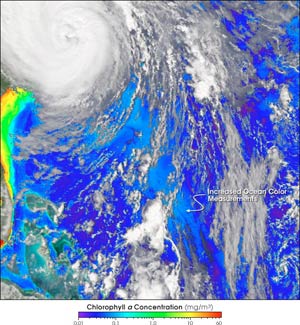A tropical cyclone is a general term for an intense low-pressure weather system that forms over and is fueled by tropical ocean waters. In the North Atlantic Ocean and Eastern Pacific Ocean, strong tropical cyclones are called hurricanes, but they have other names in other ocean regions. The beginning of life for any hurricane is a pre-existing disturbance in the atmosphere that requires certain atmospheric and oceanic conditions to develop into a hurricane. Mature hurricanes are nearly circular in shape and are typically a few hundred miles in diameter. Hurricane winds rotate cyclonically (counterclockwise in the Northern Hemisphere). The strongest winds are located in a hurricane’s eyewall, which surrounds a nearly calm eye at the storm’s center. A hurricane’s eye is typically tens of miles in diameter. Clouds in both the eye wall and the spiral bands outside the eye wall can produce very heavy rain. Hurricanes are steered by larger-scale, global winds, such as the trade winds and the Bermuda/Azores High, which is an area of high pressure that exists over the Atlantic Ocean. A hurricane interacts with the ocean before landfall and with the land after landfall. Land interaction generally causes a hurricane to decay. Hurricane activity varies by season and also due to weather and climate patterns that vary on time scales of weeks to years to decades. Hurricane activity may also be affected in the longer term by climate change. In recent years, the relationship between hurricanes and climate change has become a source of public interest, significant scientific debate, and a focus for current research. Hurricane Science: Content Outline
|


